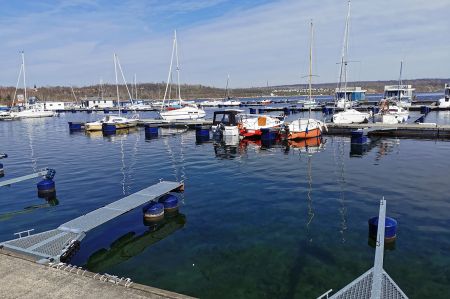Trip around Geiseltalsee - 26 kilometres of asphalt cycle path
- Written by Portal Editor
We had already covered part of the way around the Geiseltalsee on foot, now we had to do the complete circuit by e-bike.
If you haven't heard of the Geisetalsee, it is a lake left over from opencast mining that was created in the course of recultivation measures in the former lignite mining area of Geiseltal northeast of Müchel. With almost 19 square kilometres, the lake is the largest artificial lake in Germany, is one of the ten most water-rich lakes and is the largest body of water in the Central German Lake District.
Tourist use as an alternative after opencast mining
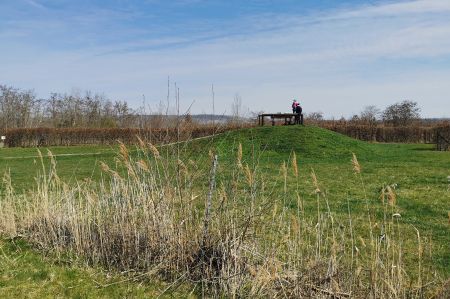 The official tourist use of the lake area should start in mid-August 2011 with a partial release. At the time, investors and lake users were irritated here because the official assessment of the stability of the embankments had still not been completed. These delays were apparently a result of the embankment demolition on Lake Concordia near Nachterstedt in June 2009. The partial release then took place in 2012, it covers a large part of the southern part.
The official tourist use of the lake area should start in mid-August 2011 with a partial release. At the time, investors and lake users were irritated here because the official assessment of the stability of the embankments had still not been completed. These delays were apparently a result of the embankment demolition on Lake Concordia near Nachterstedt in June 2009. The partial release then took place in 2012, it covers a large part of the southern part.
On the south side, in Braunsbedra and Müchel, there are two marinas that are already quite successfully occupied by private boats and some excursion boats. The infrastructure with its new residential buildings, restaurants and small beach bars are still under construction to this day. In 2014 the pier in Braunsbedra was handed over. There are bathing beaches on the north side of the Geiseltalsee, for example in Frankleben, where there is even a diving base and a dog beach, as well as in Stöbnitz with a campsite and nudist beach.
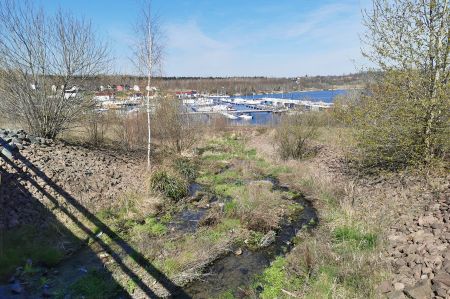 Various observation towers, such as the 14.5 m high observation tower Seeblick Klobikauerhöhe, built in 2002, are 2 km south of Klobikau, a district of the city of Bad Lauchstädt on the Klobikau heap not far from an abandoned bunker. More viewing platforms awaited us during our round trip.
Various observation towers, such as the 14.5 m high observation tower Seeblick Klobikauerhöhe, built in 2002, are 2 km south of Klobikau, a district of the city of Bad Lauchstädt on the Klobikau heap not far from an abandoned bunker. More viewing platforms awaited us during our round trip.
In 2013 the association Netzwerk Geiseltal e. V. supported by the state of Saxony-Anhalt with the installation of the "Geiseltal Legendary Stones" tourist themed road. For this purpose, boulders with stainless steel panels were installed at 25 locations around the Geiseltalsee, which offer destinations to tourists and visitors who are guided by supervisors or GPS coordinates on the trail of the Geiseltal sagas. Conceptually, this concept continues the strategy of educational tourism in Saxony-Anhalt and offers coupling points to the tourism routes Himmelswege, Via Regia, the Mühlenwanderweg and the Jakobsweg, which affect the area of the Geiseltalsee at various points.
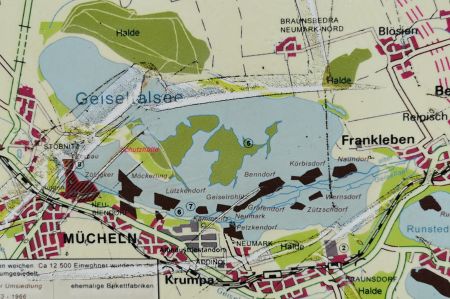 Of course, there are also information boards about the former villages in the region that fell victim to opencast mining. 16 villages had to give way to opencast mining. About 12,500 residents were resettled in the surrounding towns and communities.
Of course, there are also information boards about the former villages in the region that fell victim to opencast mining. 16 villages had to give way to opencast mining. About 12,500 residents were resettled in the surrounding towns and communities.
In August 1990, miners and citizens from the region founded the interest and support association "Geiseltalsee" e.V. (IFV). The founding members did not want to allow an “apocalyptic mood” to arise with the decline of brown coal mining in the Geiseltal. Therefore, the first and primary goal of founding the association was to make the local population and broad interest groups in politics and business aware of the great opportunities and possibilities that can be found in the design of a versatile post-mining landscape in the Geiseltal with foresight and confidence.
With the e-bike to the Geiseltalsee and around
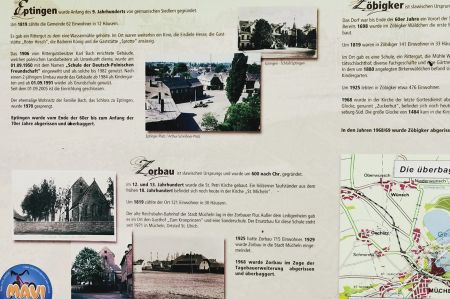 Since the Geiseltal cycle path is a circular route of only 26 kilometres, the route is not far enough for some cyclists as a day tour. So it makes sense for regional visitors to already cover the way to the lake by bike. In principle, you can of course travel by train or by car. Braunsbedra as a starting point has its own train station, which can be reached in about 1.5 hours by train from Leipzig. On the outskirts of Müchel, better above the signposted route to the marina, there is a day ticket for a fee in the public car park. Please do not park in the localities reserved for local citizens as residents. Despite the lack of information and a large number of free parking spaces, law enforcement officers are quick to give a ticket.
Since the Geiseltal cycle path is a circular route of only 26 kilometres, the route is not far enough for some cyclists as a day tour. So it makes sense for regional visitors to already cover the way to the lake by bike. In principle, you can of course travel by train or by car. Braunsbedra as a starting point has its own train station, which can be reached in about 1.5 hours by train from Leipzig. On the outskirts of Müchel, better above the signposted route to the marina, there is a day ticket for a fee in the public car park. Please do not park in the localities reserved for local citizens as residents. Despite the lack of information and a large number of free parking spaces, law enforcement officers are quick to give a ticket.
Our bike tour around the Geiseltalsee turned out to be very entertaining because there is a lot to discover and explore. If you like tourism, you can explore the marina and the numerous restaurants and cafés extensively.
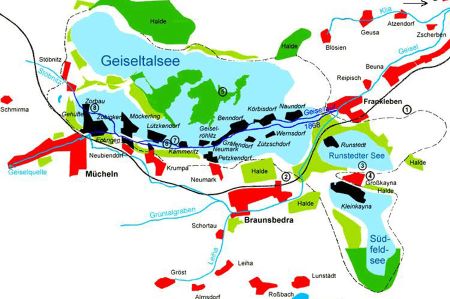 The circular cycle route passes many of these breakpoints and is paved throughout, so that riding a racing or touring bike is highly recommended. But there are also numerous passages a little off the beaten track, some of which are unpaved and lead directly along the lake shore on gravel paths. This is more of a refuge for mountain bikers and gravel riders like us. Up to the vineyard there are no notable climbs, so that even less enduring cyclists get their money's worth.
The circular cycle route passes many of these breakpoints and is paved throughout, so that riding a racing or touring bike is highly recommended. But there are also numerous passages a little off the beaten track, some of which are unpaved and lead directly along the lake shore on gravel paths. This is more of a refuge for mountain bikers and gravel riders like us. Up to the vineyard there are no notable climbs, so that even less enduring cyclists get their money's worth.
Recently there are special routes for mountain bikers, for which even special guides are offered, so that you can discover corners of the region that you can hardly find even if you know the area.
In our summary, the circular route around the Geiseltalsee is always a worthwhile destination for a day trip, especially since the regional range of entertaining events and performances will tend to increase towards spring and summer.
Please read as well:
Geiseltalsee - hundreds of years of coal mining - today tourism
